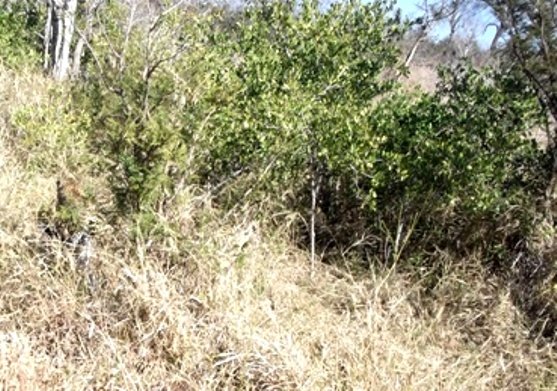Gymnosporia senegalensis, commonly known as the confetti spikethorn

Author: Ivan Lätti
Photographer: Ivan Lätti
A nice touch is added to this confetti spikethorn by the spotted visitor, so shy to pose for the photo. Gymnosporia senegalensis in flower tends to shed its corolla early. The white or close to white petals lying like confetti around the shrub at bloom time earned the species its common name. In the absence of flowers, the leopard, just visible in the grass, provides a little of the confetti look here.
A night and dusk hunter, it is uncommon to see a leopard walking about in broad daylight like this. Leopard can fortunately still roam freely and hunt beyond the fences of South African game reserves and game farms, mainly in some mountain ranges around the country. Many farmers don’t begrudge the leopard its food and welcome their continued existence in the open veld, albeit that occasional stock losses have to be endured.
The flowers of G. senegalensis grow from the leaf axils. They are white, cream or greenish white and small. The sweetly scented and many-flowered heads brighten winter days... before they become confetti.
The fruit, a globose, red-brown capsule, grows to 5 mm in diameter on a long stalk.
The Afrikaans common name for the plant is rooipendoring (red spikethorn) (Coates Palgrave, 2002).

